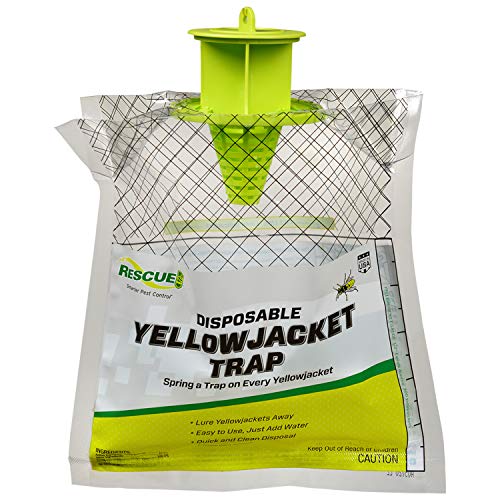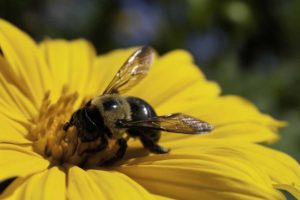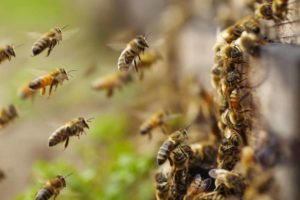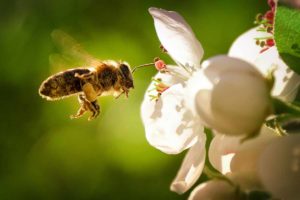Best Bee Catchers
DID YOU KNOW?
The weight from a large bee colony can cause structural damage to your walls, chimneys and roofs and can leave damaging stains on painted surfaces.
The best option if you already have an infestation is to call a professional.
The Best Bee Catchers
Bee catchers and traps are effective ways to alleviate a bee problem on your property. There are various solutions you can use, but some people prefer to trap them and get rid of them than to deter them or kill them out in the open.
We can understand the annoyance and even terror of finding out you have a bee problem. Fear not; we have some solutions for you.
Bee Catchers We Reviewed
How We Found the Best Bee Catchers
8 Reviewers
23 Products Considered
4 Products Reviewed
3 Top Picks
Bee Problem?

Rescue Non-Toxic Disposable Yellowjacket Trap
Pros
- Clean and quick disposal
- Easy to use, just add water
- Also works with hornets and wasps
- Scent-free
Cons
- Non-reusable
- Doesn’t come with hanging material
- Not effective in spring, in some regions
OUR VERDICT
No muss, no fuss. Simply cut the top off, pour in water, and hang it up until it’s full.
Our Review
We like the Rescue Non-Toxic Disposable Yellowjacket Trap because it’s quick and easy to use, for both set-up and disposal. An attractant in included in each trap, so set-up simply requires addition of water, which stimulates a hormone in the bait. Then hang the trap (as instructions state) at least 20 feet from a nest or know location. Once the pack is full, remove it from its location and throw it away.
The hormone attractant is undetectable to human, and the design is such that there is only an entrance – no exit – trapping bee’s and wasp’s inside with no way to escape.
Be sure to order the correct product for your region: East of the Rockies, and West of the Rockies, as the attractant is geographically specific.
article continues below

RESCUE Trapstik
Pros
- Chemical and Odor Free
- Weather Resistant
- Also attracts wasps, flies, and moths
Cons
- Some assembly required
- Bird guard may deter some larger bees
- Inhumane
OUR VERDICT
When carpenter bees and wasps are busy buzzing around your head, introduce them to this attractive and colorful unit which invites them closer and never lets them leave.
Our Review
When it comes to enjoying your backyard in the summer, insects such as carpenter bees and wasps are the worst for crashing the party. A quick and simple way to trap and dispose of these pests is the RESCUE Trapstik.
After a quick assembly of the bird guard simply hang the trap in a general area like inside a porch or from the eaves, or near a known nest, and let the Trapstiks appealing colors and patterns attract and trap these pesky party poopers. Once the Trapstik is covered in bees, wasps, and other insects, simply dispose of the unit and rehang a new one.
The bird guard is specifically designed to guard against small birds from getting caught and ensure you only trap unwanted pests. The new version also features small spikes on each end to prevent birds from perching.
The Trapstik works from Spring to Fall and is chemical- and odor-free.

Wuhostam Plastic Wasp Trap
Pros
- Multiple entry points
- Eco friendly
- Simple to use and maintain
Cons
- Some reports of poor design
- Holes too big to contain some insects
OUR VERDICT
Many people enjoy a hassle-free solution. The Wuhostam Plastic Wasp Trap is just that. It is very easy to use and set up, and while it may have a cute design, it is deadly for the bees. This product is a clean and efficient way to get rid of bees and is our all-around favorite.
Our Review
The upgraded version Wuhostam Plastic Wasp Trap is simple to use and comes with a left and right part that snap together to form the bulk of the trap, a bottom tray to avoid leaks, and a top cap that screws on and provides hanging capability.
Depending on the pest you wish to trap, mix up sugar, honey, fruit juice, etc, place into the trap – secure the bottom tray and the top cap – and hang intermittently throughout your yard. Once the trap is full, remove the bottom tray and top cap, snap the two pieces apart and dispose of the dead insects. Give it a quick wash and you’re good to use it again.
Additional Tips & Advice
People see bees in many different ways. They look adorable as painted cartoons on the wall of a baby’s room, but they terrify most people when they swarm in real life. But how much do we know about bees? Take some time to read on for some additional information and advice on bees.
About Bees
Everyone knows something about bees. They are those black and yellow flying insects that make people run for their lives. Most people dread the idea of being in the presence of a bee due to their painful stinger. Some people are even allergic to bees and have a real health risk.
A good thing to remember about bees is that they mainly sting when they feel threatened. This is good to know because if you remain calm, do not swat, and remove yourself from the situation, there is a good chance you can get away without a single sting.
Bees live in colonies, so if you find yourself stumbling upon a nest or a hive, be very cautious. If you alert a few bees, the whole colony could swarm—and that’s when you’re in real trouble.
Bee colonies have one queen, worker bees, drones, and scouts. Queen bees usually live about five years, so after that point, the hive gives birth to new queens that will split up and create new colonies. The scout bees are the ones who go in search of a good location for these new colonies, so it is important to defend your home from possible settlements.
Sealing all holes and crevices can help you avoid scouts. Setting up traps and perimeter protection around your home can also kill or deter the scouts, keeping the colony away in the long haul.
Bee Trap Tips
Strategy can be an important part of getting rid of your bee problem. While most traps are very simple to use and set up, you may not know where to put them as well as other helpful tips.
Where you place your trap depends on your situation. For example, carpenter bees are more predictable than other kinds of bees because we know that they will likely set up camp near, in, or under wooden structures. Therefore, that is where you should be placing traps.
General places that are good to hang traps are corners and peaks of buildings as well as tree branches.
While you can certainly leave your traps up all year long, you don’t have to. Bees are dormant during the colder months, so traps are essentially useless during that time.
As for your bait, you have several options from which to choose. The most common option is the classic sugar-water mix. Other people like to use lemon juice with their sugar, while some will use soda by itself. Maple syrup and water work well together, and some people have even sworn by using beer.
Summary
Traps are certainly an effective route to take in your fight against bees. The stinging insects can cause such a hassle, and while the process can be frustrating, it helps to know you have a lot of options right at your fingertips. Use one of the bee traps we’ve discussed to rid your life of the nasty pests and their hives.





